Scenes featuring the Greek chorus were filmed at the Teatro Antico in Taormina. Allen chose the theater because he had made an appearance there in 1971 for his film "Bananas" (1971).
Ancient Theater of Taormina | Sicily’s second largest theater
The Ancient Theater of Taormina, Sicily, showcases Greek and Roman architecture, and was carved from Mount Taurus in the 3rd century B.C. It offers stunning views of the Ionian Sea and houses the famous Naumachia fountain. Experience the timeless...
Quick Information
RECOMMENDED DURATION
2 hours
Timings
09:00–17:00
VISITORS PER YEAR
244264
TICKETS
From € 17
EXPECTED WAIT TIME - STANDARD
0-30 mins (Peak), 0-30 mins (Off Peak)
Did you know?
The Ancient Theater of Taormina was originally built by the ancient Greeks in the 3rd century BC.
The theater, initially Greek, was heavily modified by the Romans, blending Greek and Roman styles to create its current form.
The theater's design has excellent acoustics which allow performers to project their voices naturally, without modern amplification.
Book your Ancient Theater of Taormina tickets
Who built the Ancient Theater of Taormina?
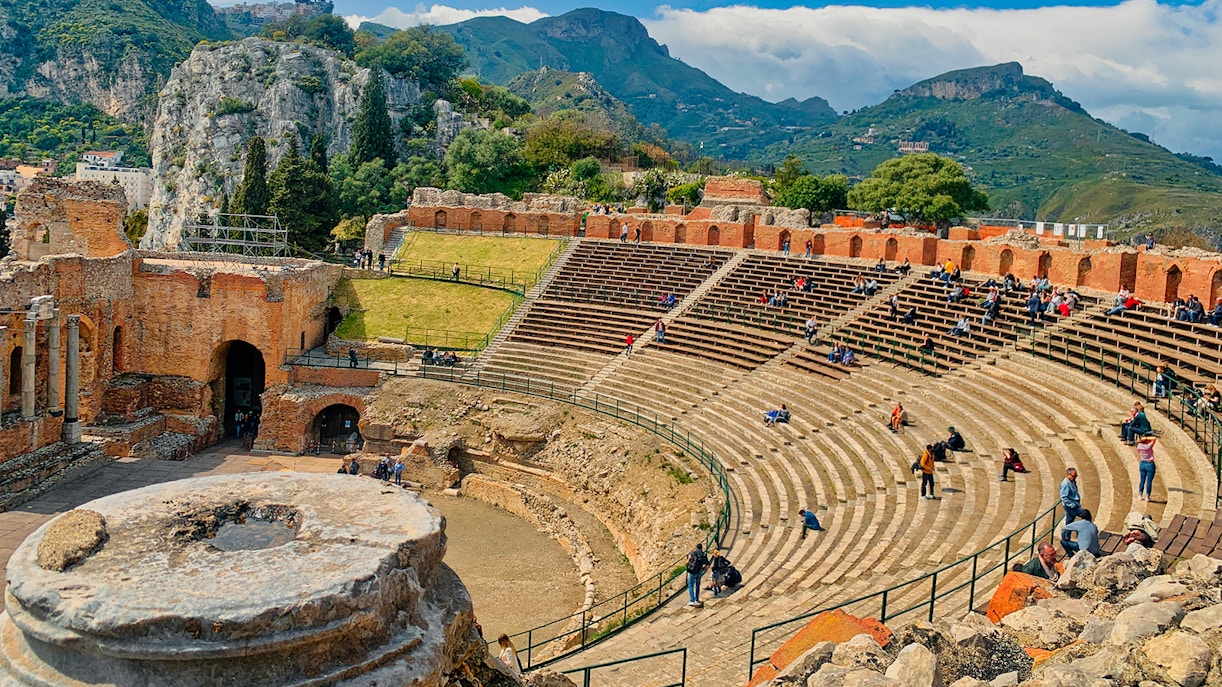
The Ancient Theatre of Taormina was originally constructed by the Greeks in the 3rd century BCE, showcasing their architectural prowess and cultural influence. Over time, the Romans further enhanced and expanded the theater during their rule, adding to its grandeur and functionality. This collaborative effort between two ancient civilizations resulted in a remarkable structure that stands as a testament to their enduring legacies.
The Greeks laid the foundation, while the Romans contributed to its evolution, transforming it into a venue for entertainment and cultural gatherings. Today, visitors marvel at the ingenuity and craftsmanship of both civilizations encapsulated within the walls of this historic amphitheater. The collaborative efforts of Greek and Roman builders have left a lasting imprint on Taormina's cultural landscape, inviting admiration and exploration from generations to come.
What to see at the Ancient Theater of Taormina, Sicily?
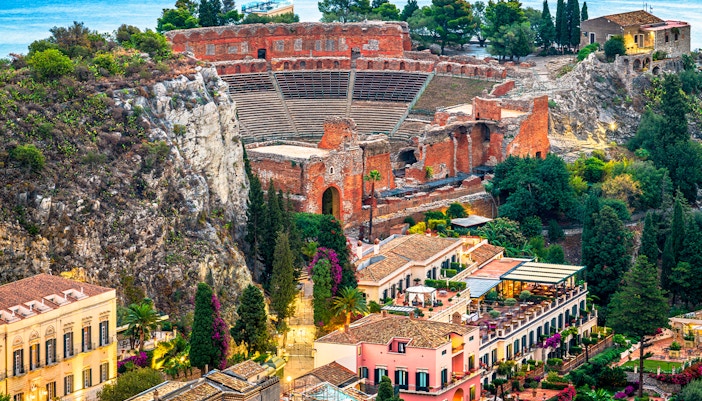
The Antiquarium
Adjacent to the theater, the Antiquarium is a compact archaeological museum housing prized artifacts, including a dedicated statue of Caius Claudius Marcellus and an intricately carved oval marble sarcophagus.
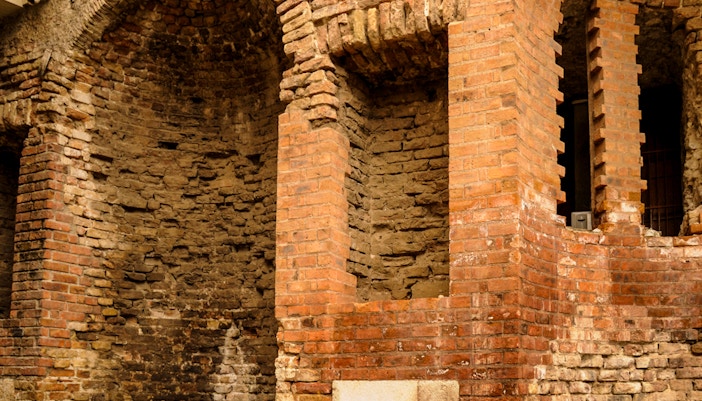
The Naumachia
Erected during the Roman period, the Naumachia, or naval battle monument, stands as a significant fountain. Its striking design features a crimson brick wall spanning over one hundred meters in length and rising to a height of five meters.
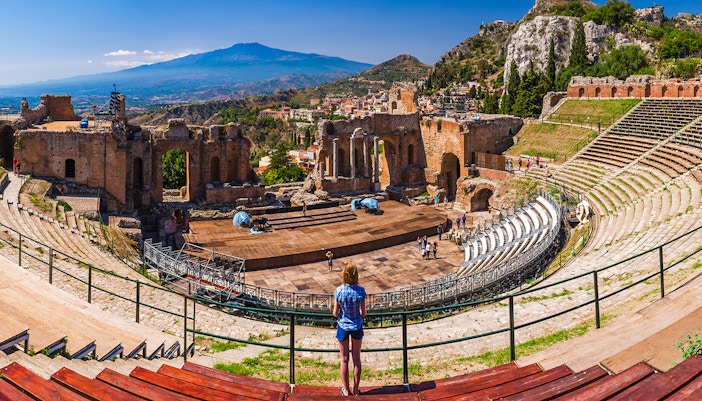
The Cavea (Seating Area)
The tiered seating structure, known as the cavea, stands as the iconic centerpiece of the Ancient Theatre of Taormina. Hewn into the natural rock of the hillside, the cavea provides breathtaking vistas of the stage and the surrounding scenery.
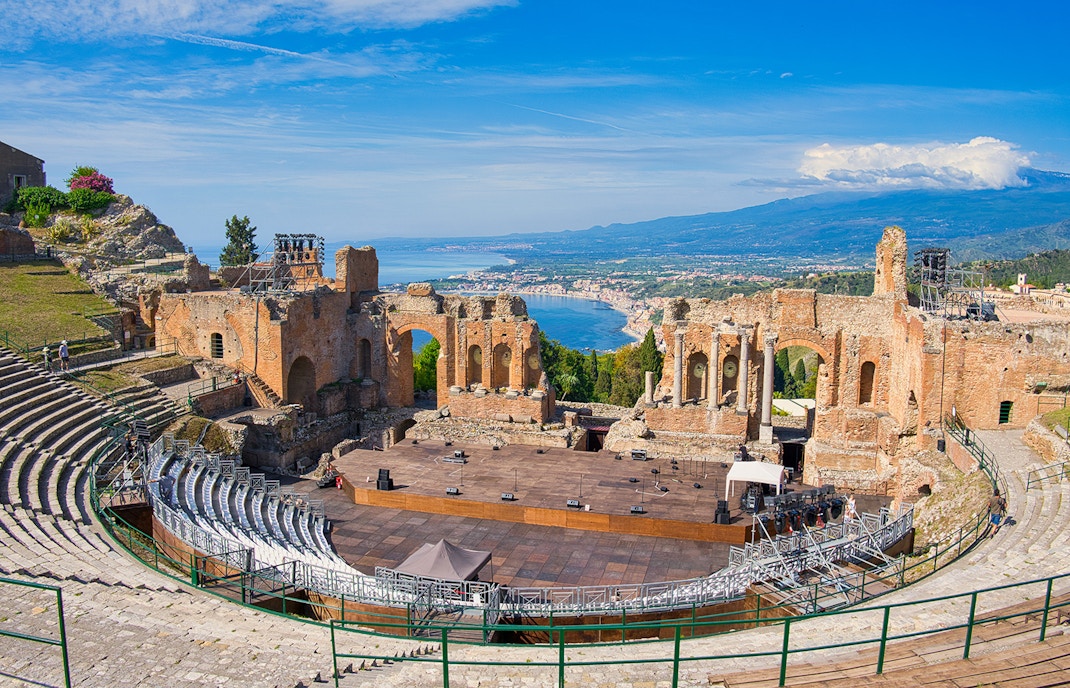
The Scene (Stage)
Although now weathered and worn, the scene was once the vibrant focal point where actors graced the platform. Presently in ruins, many of its original columns have succumbed to time's passage.
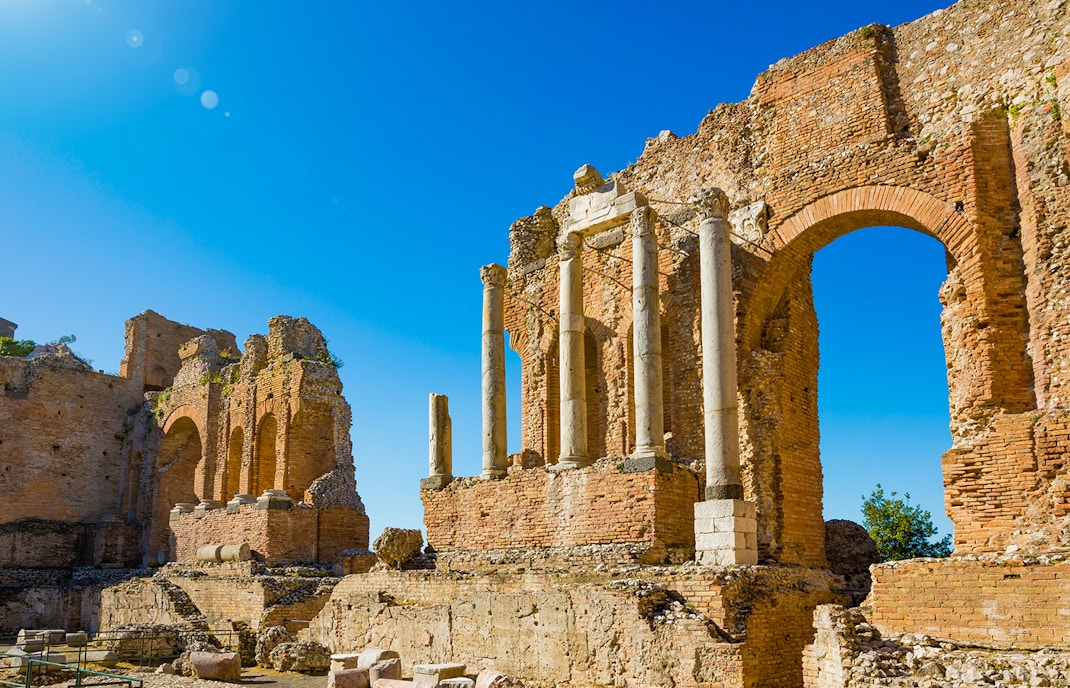
The Orchestra
Originally designated for musicians and performers during Greek antiquity, the Orchestra underwent transformation under Roman rule, serving as the arena for gladiatorial combat.
Design of the Ancient Theater of Taormina
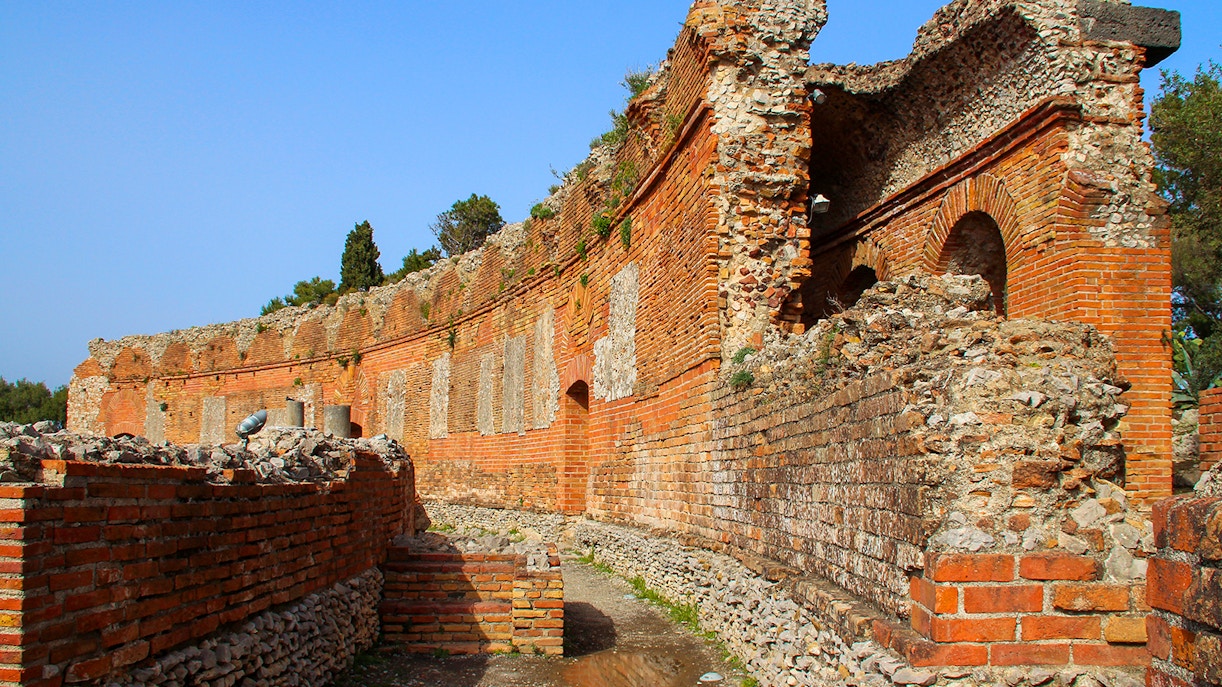
The Ancient Theatre of Taormina is a marvel of ancient architecture, showcasing a blend of Greek and Roman design elements. Carved into the natural hillside, its semicircular seating area, known as the cavea, offers breathtaking views of the stage and surrounding landscape. Supported by Corinthian columns and adorned with intricate reliefs, the theater's facade exudes grandeur and elegance.
The semicircular orchestra, originally used for musical performances, further enhances its acoustics, allowing sounds to resonate throughout the space. Despite centuries of wear and tear, the theater's well-preserved design and strategic layout continue to captivate visitors, serving as a testament to ancient architecture.
The Ancient Theater of Taormina in popular culture
Woody Allen's "Mighty Aphrodite" (1995)
Frequently asked questions about the Ancient Theater of Taormina
The Ancient Theater of Taormina is significant for its remarkable preservation, stunning panoramic views of Mount Etna and the Sicilian coastline, its rich history dating back to the 3rd century BC, and its continued use as a venue for cultural events, making it a symbol of ancient Greek and Roman influence in Sicily.
Must-see spots at the Ancient Theater of Taormina include the well-preserved seating area with its stunning views of Mount Etna and the Mediterranean Sea, the stage area that hosts various performances and concerts, the scenic walkways and corridors offering glimpses into ancient architectural features, and the historical artifacts and exhibits within the adjacent museum providing insights into the theater's rich history and significance.
The Ancient Theater of Taormina was built for various purposes like hosting theatrical performances, serving as a center for cultural and social activities in ancient Greek and Roman times, while also showcasing the wealth, power, and artistic achievements of the ruling elite.
The specific architect or designer of the Ancient Theater of Taormina is unknown, as it was constructed during the Hellenistic period, likely in the 3rd century BC, and then later modified by the Romans. However, it's believed to have been built by Greek architects, taking advantage of the natural slope of the hillside to create the amphitheater's seating structure and optimize acoustics for theatrical performances.
The Ancient Theater of Taormina is primarily known for its Greco-Roman architectural style, reflecting the influence of both Greek and Roman civilizations. Its design features a classical amphitheater layout with a semi-circular seating area, typical of Greek theaters, while also incorporating elements such as Roman arches and columns added during later renovations.
The Ancient Theater of Taormina was likely opened in the 3rd century BC during the Hellenistic period when it was originally constructed by the ancient Greeks. However, specific records indicating the exact date of its opening are not available due to its antiquity.
The Ancient Theater of Taormina is famous for several reasons: its remarkable preservation as one of the most intact ancient Greek theaters, its stunning location offering panoramic views of Mount Etna and the Sicilian coastline, its rich history dating back to the 3rd century BC, its use as a venue for various cultural events and performances, and its significance as a symbol of ancient Greek and Roman influence in Sicily.
Tickets for the theater can be purchased online or in person at the museum. It is recommended to book ahead of time to avoid long lines and ensure availability.
A standard ticket to the theater is €17.
It fell into disrepair and was gradually destroyed over time due to neglect and natural decay.







